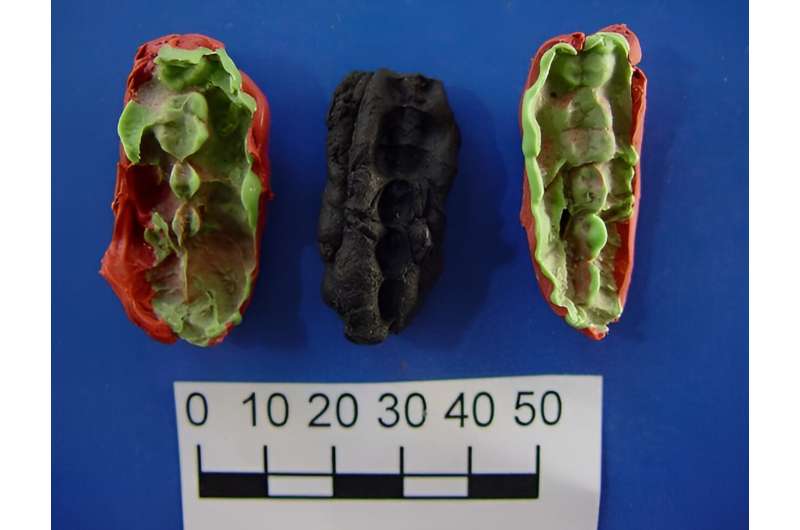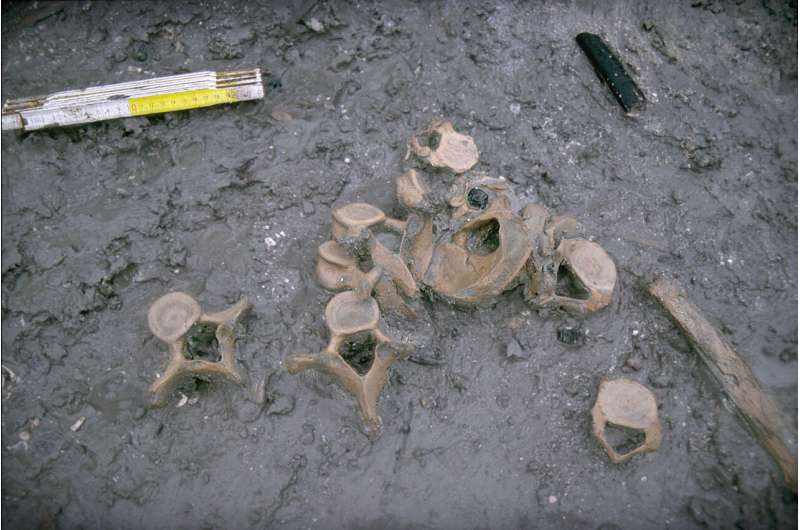This article has been reviewed according to Science X's editorial process and policies. Editors have highlighted the following attributes while ensuring the content's credibility:
fact-checked
peer-reviewed publication
trusted source
proofread
Analysis of chewed birch tar reveals poor Mesolithic oral health

Members of a hunter-gatherer group that lived in south-western Scandinavia during the Mesolithic era—approximately 10,000 years ago—may have been affected by tooth decay and gum disease, according to a study published in Scientific Reports.
Emrah Kırdök, Anders Götherström and colleagues sequenced the DNA found on three pieces of birch tar—a substance made from heated birch bark—that were excavated in the 1990s from Huseby Klev, Sweden and have been dated to between 9,890 and 9,540 years old.
They created profiles of the microbial, plant, and animal species DNA found on each sample and compared these to those previously reported for modern human samples, ancient human dental plaque, and a 6,000 year old chewed birch tar sample.
The authors found that the microbial profiles of the birch tar samples were most similar to microbes found in the modern human mouth, in ancient human dental plaque, and in a 6,000 year old chewed birch tar sample. This suggests that the samples from Huseby Klev were chewed by humans.

They also found that they contained an increased abundance of several bacteria that are commonly associated with gum disease—such as Treponema denticola, Streptococcus anginosus, and Slackia exigua—and tooth decay—such as Streptococcus sobrinus and Parascardovia denticolens.
Based on the relative abundance of microbial species in the birch tar samples and using machine learning models, the authors estimate that the probability that members of the hunter-gatherer group were affected by gum disease is between 70 and 80%.
The authors suggest that the wider use of teeth to perform tasks involving gripping, cutting and tearing in ancient hunter-gatherer societies may have increased their risk of coming into contact with microbial species that cause gum disease.
In addition to microbial DNA, the authors identified DNA sequences consistent with those from a range of plant and animal species, including hazelnut, apple, mistletoe, red fox, gray wolf, mallard, limpet, and brown trout. These could reflect the materials that members of the hunter-gatherer group chewed prior to the birch tar samples. The authors speculate that these materials could have included food sources, furs, and bone tools.
The findings highlight the poor oral health of a group of Mesolithic Scandinavian hunter-gatherers and provide insight into their diet, material use, and local environment.
More information: Emrah Kırdök, Metagenomic analysis of Mesolithic chewed pitch reveals poor oral health among stone age individuals, Scientific Reports (2024). DOI: 10.1038/s41598-023-48762-6. www.nature.com/articles/s41598-023-48762-6
Journal information: Scientific Reports
Provided by Nature Publishing Group





















